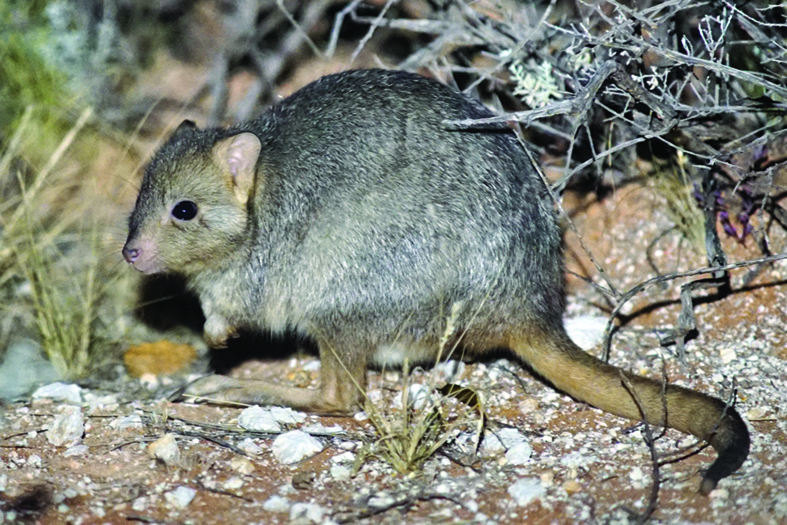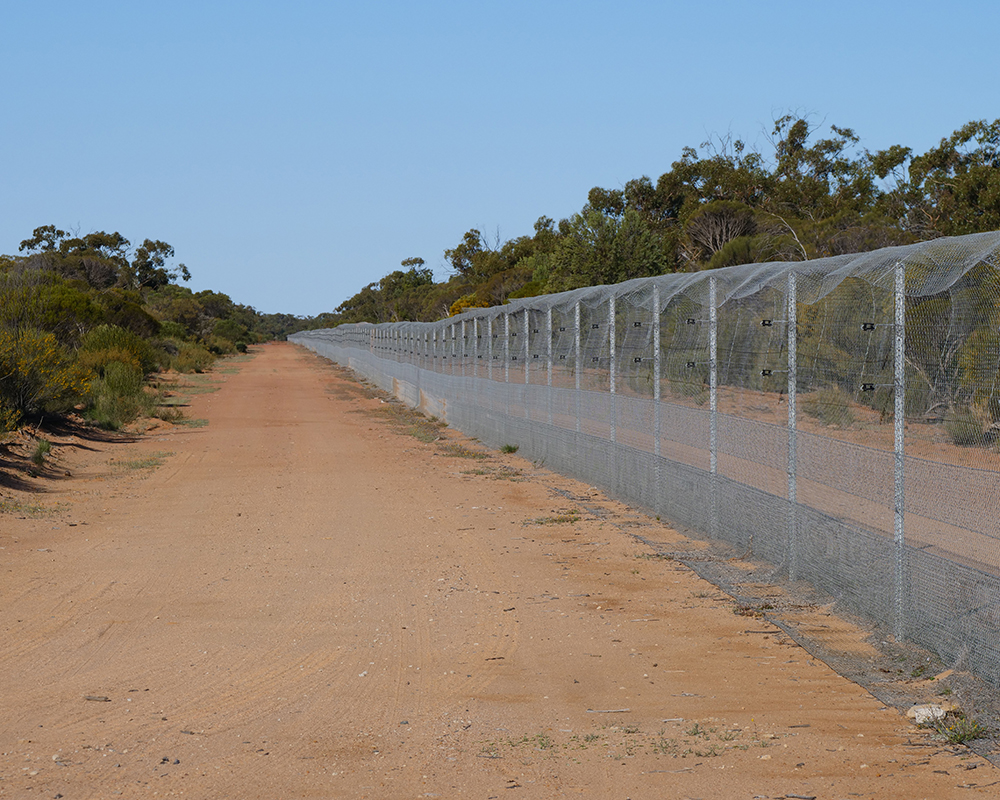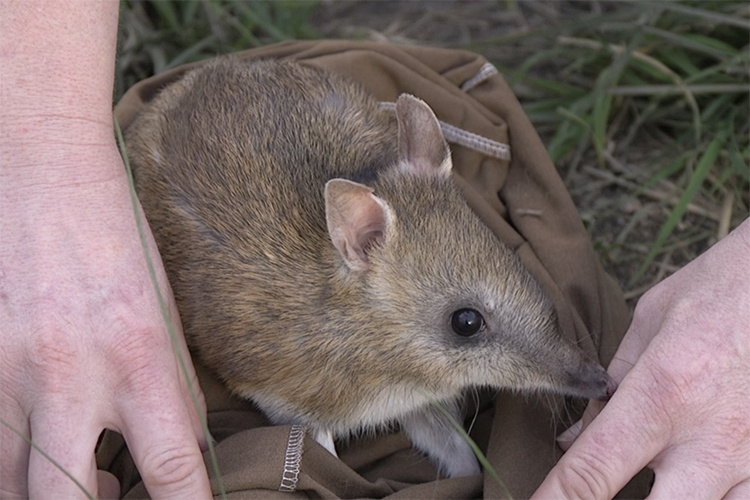
Major declines in threatened mammal populations over last 20 years, but news not all bad
Wednesday, 22 April 2020Populations of Australia’s threatened mammals have declined by over one third (38%) in twenty years (1995-2016), according to new research, but the news isn’t all bad because among the losses there have been some significant recoveries.
The findings come from Australia’s Threatened Species Index which combines data from monitoring
programs across the country to track trends in threatened species populations. The project is a collaboration with many state agencies, conservation
NGOs, and other researchers, who all contribute data to this national collation.
The index was developed by the Threatened Species Recovery Hub of the Australian Government’s National Environmental Science Program and is the first of
its kind in the world. The recent addition of mammals to the index has put the spotlight on trends for Australian threatened mammal populations.
Dr Elisa Bayraktarov from the University of Queensland who leads the research has spent four years developing the index and assembling data on threatened
and near-threatened species.
“A key finding is that in areas without any active conservation, on average populations of threatened mammals have decreased by 60% over the last two decades
(1995-2016), a loss of well over half.
“But Australia has also achieved some conservation successes in that period, and our results show that where effort is being made it usually pays off.

Monitoring data for the Australian sea-lion is included in the Threatened Mammal Index. Image: Nicolas Rakotopare

Monitoring data for the Australian sea-lion is included in the Threatened Mammal Index. Image: Nicolas Rakotopare
“When we look across all sites with targeted conservation management we see that on average populations have increased by 46% between 1995 and 2016. This
management includes actions such as on-going feral animal control, feral predator exclusion fencing and ecological fire management.
Dr Sally Box, the Australian Government’s Threatened Species Commissioner, said the index “will help provide a better understanding of how our threatened
mammals are faring”.
“When it comes to recovering Australia’s threatened species, new tools and the latest science are critical to understanding trends and determining where
we should focus our efforts. The power of this index will only increase as more species and datasets are added,” said Dr Box.
The results also demonstrate the effectiveness of Australia’s havens network of fox- and cat-free islands and fenced conservation areas, for protecting
populations of threatened species.

There has been a five-fold increase in the size of threatened mammal populations at feral predator-free islands and fenced reserves, like the Australian Wildlife Conservancy's Mount Gibson Sanctuary. Image: Jaana Dielenberg
“Between 2000 and 2016, populations of 15 threatened mammals at cat- and fox-free sites increased five-fold; a remarkable result,” Dr Bayraktarov reported.
Prof John Woinarski from Charles Darwin University, who is part of the research team, said the growth of populations inside havens shows that when Australian
mammals are protected from cats and foxes they do well.
“The burrowing bettong (boodie) and bridled nail-tailed wallaby are among the species that have had large population gains inside havens. The recoveries
of these species represent some of the most spectacular conservation successes in the world,” said Prof Woinarski.
“However, havens cover only 0.1% of Australia’s total area, so they are only one part of the solution to Australia’s long-term biodiversity loss, and they
are not a solution for species that are declining for reasons other than cats and foxes.
“Most of Australia’s threatened mammal populations occur outside of havens,” he said.

The mainland eastern barred bandicoot is one of the 57 mammals contained in the Threatened Species Index. Image: Nicolas Rakotopare / Mt Rothwell
The index currently includes data for 57 mammal species collected at 1186 sites across Australia, but these numbers are growing as new data is added. The
Threatened Species Index (TSX) also includes threatened birds, and data on plants are currently being compiled.
The data in the index was collected by government conservation agencies, the Australian Wildlife Conservancy, Arid Recovery, other non-government conservation
organisations, university researchers, and the members of the community.
The research team encourages any groups monitoring threatened and near threatened species to contribute their data.
According to Dr Bayraktarov, the index includes data on 17 threatened bird and mammal species at about 150 sites that may have been impacted by the recent
bushfires.
“We are currently talking to the groups on the ground that are monitoring these sites to see how much they have been impacted,” Dr Bayraktarov said.
“As data from bushfire affected sites is added to the index in future years it will enable the overall impact of the fires on threatened species populations
to be understood, in addition to providing a tool to measure their recoveries.”
The Threatened Species Recovery Hub is a collaboration of leading Australian research institutions to undertake science to support the recovery of Australia’s
threatened species. It receives funding from the Australian Government’s National Environmental Science Program.
Additional information
The index tells you the average change in population sizes compared to a base year. You can also look at the trends for different groups such as: marine or terrestrial mammals; small, medium or large species; or regions such as states or territories.
Findings factsheets:
A Threatened Mammal Index for Victoria
A Threatened Mammal Index for Queensland
A Threatened Mammal Index for the Northern Territory
A Threatened Mammal Index for South Australia
A Threatened Mammal Index for Tasmania
A Threatened Mammal Index for Western Australia
A Threatened Mammal Index for Queensland
A Threatened Mammal Index for the Northern Territory
A Threatened Mammal Index for South Australia
A Threatened Mammal Index for Tasmania
A Threatened Mammal Index for Western Australia
Media inquiries:
Jaana Dielenberg, TSR Hub Communication Manager, +61 413 585 709 j.dielenberg@uq.edu.au
Top Image: The burrowing bettong (boodie) has had large population gains inside cat- and fox-free havens. Image: Hugh McGregor/Arid Recovery
Jaana Dielenberg, TSR Hub Communication Manager, +61 413 585 709 j.dielenberg@uq.edu.au
Top Image: The burrowing bettong (boodie) has had large population gains inside cat- and fox-free havens. Image: Hugh McGregor/Arid Recovery